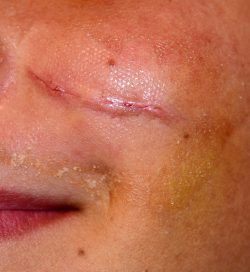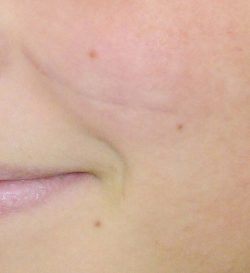SCARS AND SKIN LESIONS
Scars and skin lesions


Description and in practical terms
Dermatological surgery is part of plastic surgery. Our aim is to remove skin lesions (benign or malignant) with the most discreet scars possible.
I usually do the suture (stitches) in an intracutaneous manner with a resorbable wire. This way, there is no need to remove the wires. I then apply Steri-strips on top. They help to support the two sides of the scar. Finally, I apply a glue in order to make the scar waterproof so the patient can take showers straight away.
I recommend the application of a tape for 3 months (collagen synthesis phase). It is not demanding and allows to have a normal life since it only needs to be changed once it gets peeled off. The pressure on the scar made by this type of dressing makes the scar less visible, and thus making the surgery result much more beautiful!
In addition to skin lesions, it is also possible to improve or correct unsightly scars using aesthetic surgery techniques. The result depends on different factors: the location of the scar, the patient’s lifestyle, and the healing process.
It is necessary to use plastic surgery and surgical dermatology techniques when lesions are significant (stretched out or deep). Specific techniques such as skin grafts, skin flaps, muscle flaps, etc. are used in certain cases.
FAQ
After how long is it possible to correct a scar?
Skin healing is a long process that may take up to a year. Mechanical strength is acquired after 3 months (collagen synthesis), then the scar’s maturation phase will start (whitening and collagen reorganisation).
We therefore wait for 1 year to correct the scar.
How can I know if my lesion needs a surgical procedure?
There are 2 main reasons to remove a skin lesion:
It is a medical indication or request my a doctor or dermatologist.
The lesion is ungraceful and there is an aesthetic indication.

